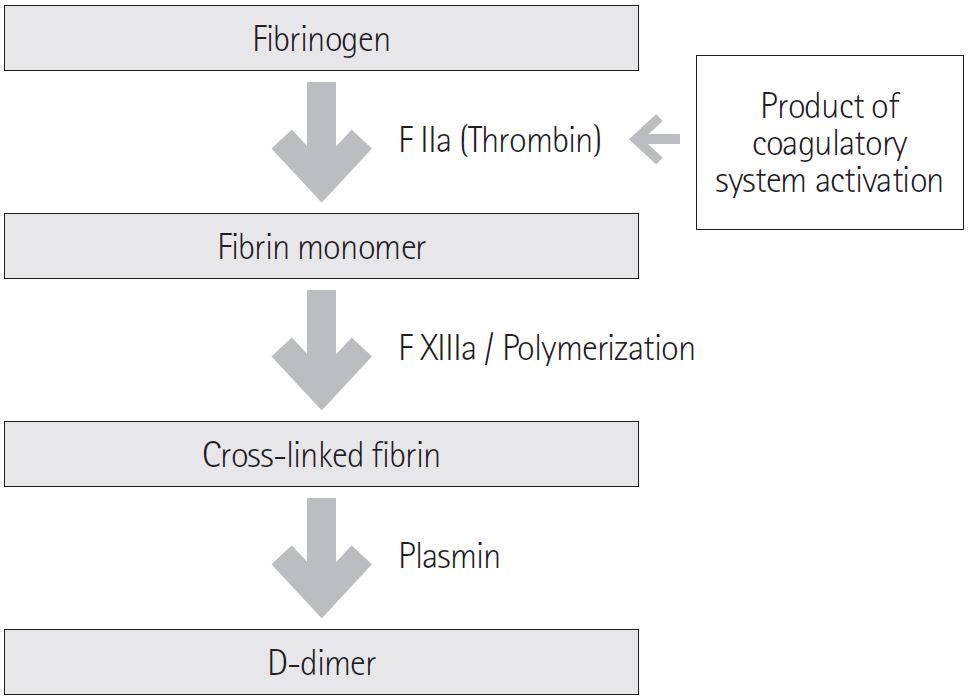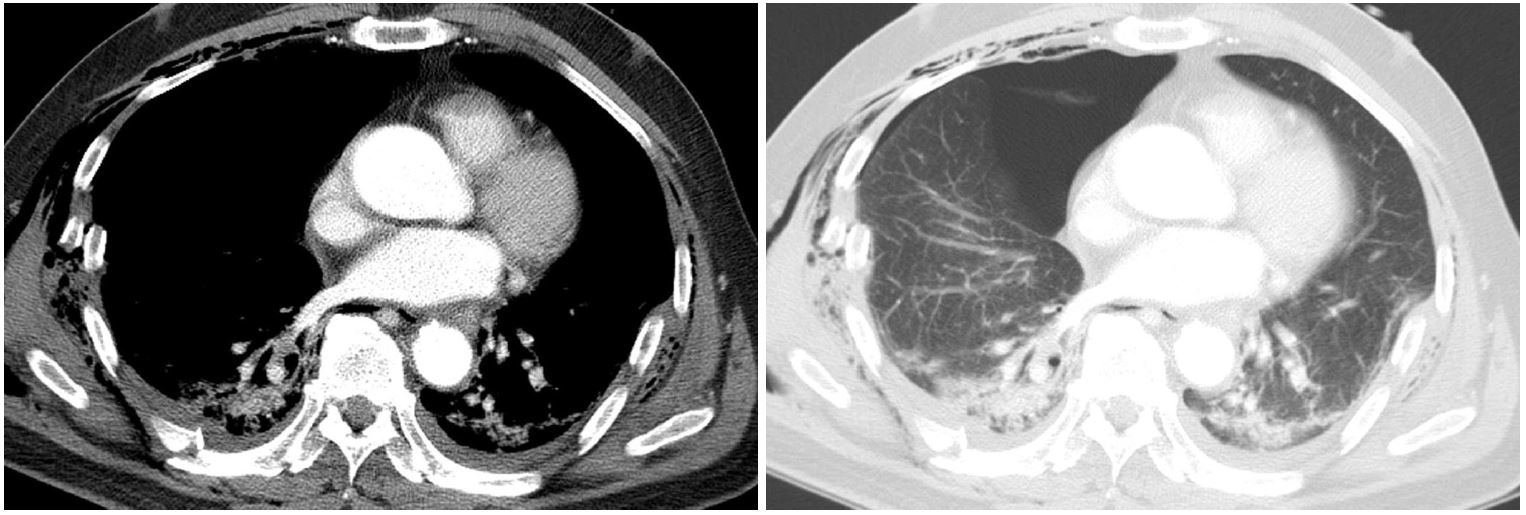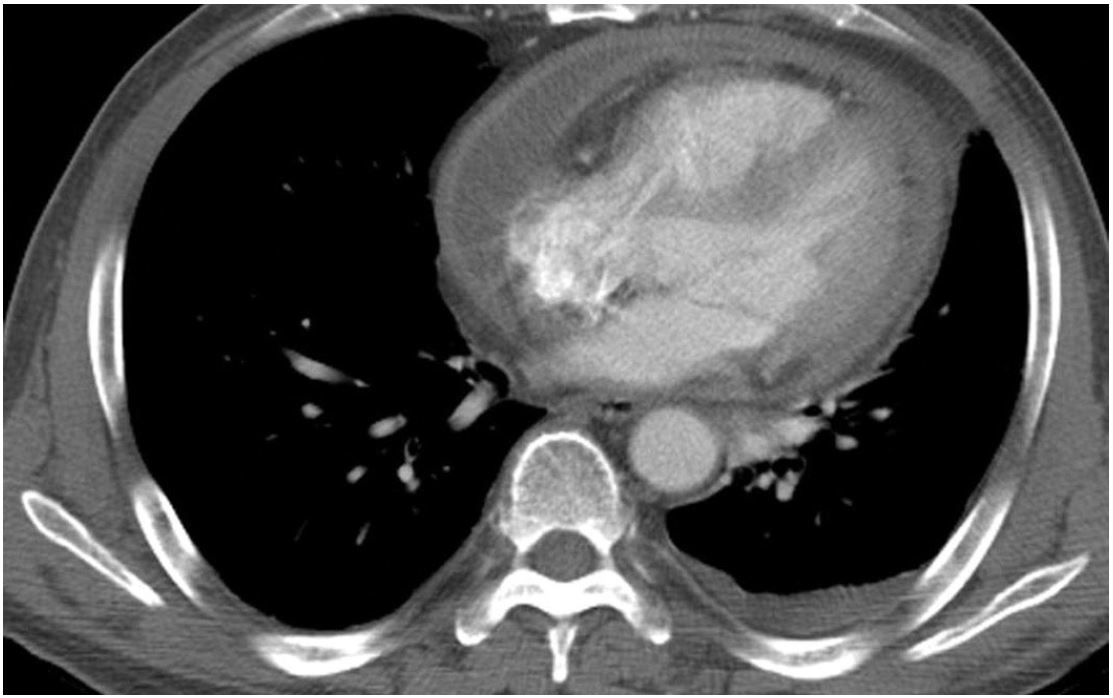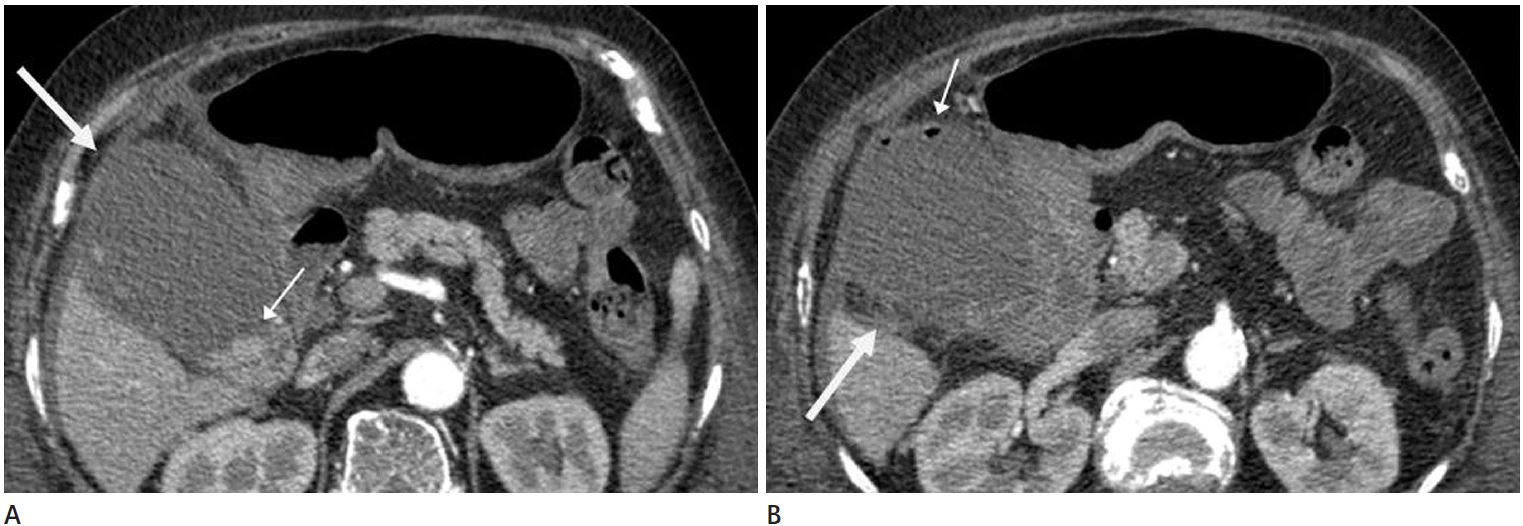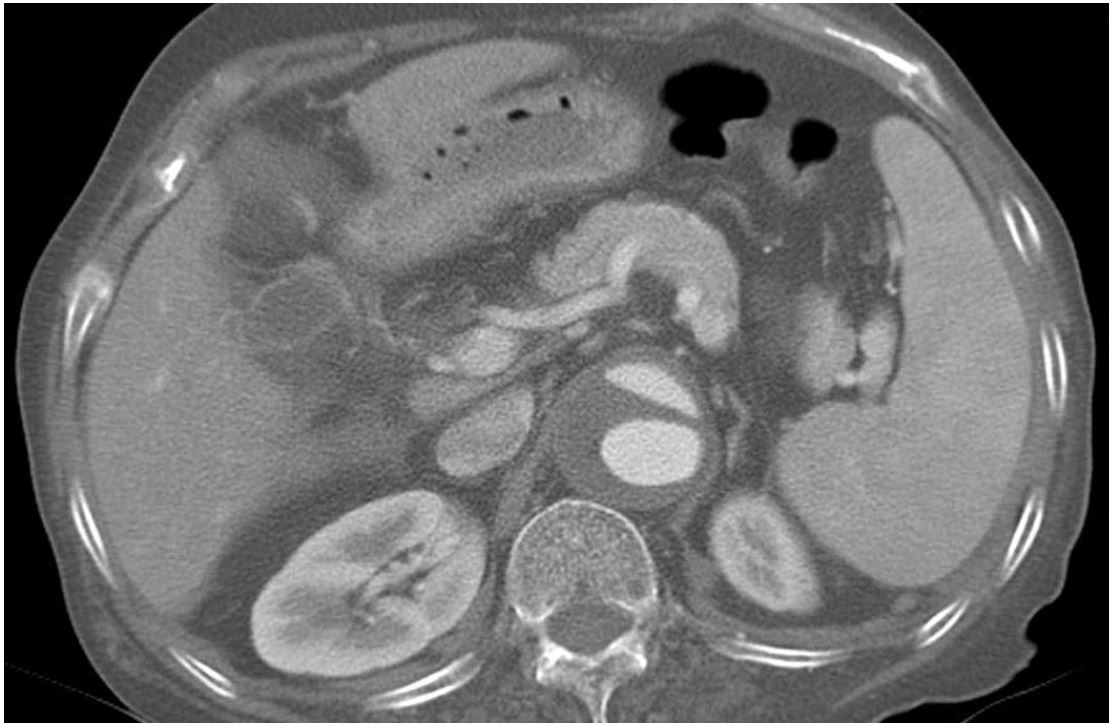J Korean Soc Radiol.
2012 Jan;66(1):93-103. 10.3348/jksr.2012.66.1.93.
CT Findings of Disease with Elevated Serum D-Dimer Levels in an Emergency Room Setting
- Affiliations
-
- 1Department of Radiology, Wonju Christian Hospital, Yonsei University Wonju College of Medicine, Wonju, Korea. wckwon@yonsei.ac.kr
- KMID: 2208877
- DOI: http://doi.org/10.3348/jksr.2012.66.1.93
Abstract
- Pulmonary embolism and deep vein thrombosis are the leading causes of elevated serum D-dimer levels in the emergency room. Although D-dimer is a useful screening test because of its high sensitivity and negative predictive value, it has a low specificity. In addition, D-dimer can be elevated in various diseases. Therefore, information on the various diseases with elevated D-dimer levels and their radiologic findings may allow for accurate diagnosis and proper management. Herein, we report the CT findings of various diseases with elevated D-dimer levels in an emergency room setting, including an intravascular contrast filling defect with associated findings in a venous thromboembolism, fracture with soft tissue swelling and hematoma formation in a trauma patient, enlargement with contrast enhancement in the infected organ of a patient, coronary artery stenosis with a perfusion defect of the myocardium in a patient with acute myocardial infarction, high density of acute thrombus in a cerebral vessel with a low density of affected brain parenchyma in an acute cerebral infarction, intimal flap with two separated lumens in a case of aortic dissection, organ involvement of malignancy in a cancer patient, and atrophy of a liver with a dilated portal vein and associated findings.
MeSH Terms
-
Atrophy
Brain
Cerebral Infarction
Coronary Stenosis
Emergencies
Fibrin Fibrinogen Degradation Products
Glycosaminoglycans
Hematoma
Humans
Liver
Mass Screening
Myocardial Infarction
Myocardium
Perfusion
Portal Vein
Pulmonary Embolism
Sensitivity and Specificity
Thrombosis
Venous Thromboembolism
Venous Thrombosis
Fibrin Fibrinogen Degradation Products
Glycosaminoglycans
Figure
Reference
-
1. Lippi G, Franchini M, Targher G, Favaloro EJ. Help me, Doctor! My D-dimer is raised. Ann Med. 2008; 40:594–605.2. Park EA, Lee W, Lee MW, Choi SI, Jae HJ, Chung JW, et al. Chronic-stage deep vein thrombosis of the lower extremities: indirect CT venographic findings. J Comput Assist Tomogr. 2007; 31:649–656.3. Wittram C, Maher MM, Yoo AJ, Kalra MK, Shepard JA, McLoud TC. CT angiography of pulmonary embolism: diagnostic criteria and causes of misdiagnosis. Radiographics. 2004; 24:1219–1238.4. Shin YS, Kim YJ, Park IS, Chi HS. Alteration of coagulation and fibrinolysis in multiple trauma. J Korean Surg Soc. 1999; 57:172–179.5. Wang ZJ, Reddy GP, Gotway MB, Yeh BM, Hetts SW, Higgins CB. CT and MR imaging of pericardial disease. Radiographics. 2003; 23 Spec No:S167–S180.6. Beauchamp NJ Jr, Scott WW Jr, Gottlieb LM, Fishman EK. CT evaluation of soft tissue and muscle infection and inflammation: a systematic compartmental approach. Skeletal Radiol. 1995; 24:317–324.7. Arnett JH, Mohajer K, Okon SA. Evidence of acute myocardial infarction on CT. Br J Radiol. 2007; 80:e219–e221.8. Ohlmann P, Faure A, Morel O, Petit H, Kabbaj H, Meyer N, et al. Diagnostic and prognostic value of circulating D-Dimers in patients with acute aortic dissection. Crit Care Med. 2006; 34:1358–1364.9. Franchini M, Montagnana M, Targher G, Manzato F, Lippi G. Pathogenesis, clinical and laboratory aspects of thrombosis in cancer. J Thromb Thrombolysis. 2007; 24:29–38.10. Gram J, Duscha H, Zurborn KH, Bruhn HD. Increased levels of fibrinolysis reaction products (D-dimer) in patients with decompensated alcoholic liver cirrhosis. Scand J Gastroenterol. 1991; 26:1173–1178.
- Full Text Links
- Actions
-
Cited
- CITED
-
- Close
- Share
- Similar articles
-
- Clinical Course of Advanced Cancer Patients with Lower-Extremity Edema and Elevated D-dimer Levels who Underwent Computed Tomography Venography
- Correlation between plasma D-dimer levels and the severity of patients with chronic urticaria
- Differential diagnostic factors of type 1 and type 2 myocardial infarction in patients with elevated cardiac troponin levels
- Association between D-dimer and long-term mortality in patients with acute severe hypertension visiting the emergency department
- Serum D-dimer should not be used in the diagnosis of venous thromboembolism within 28 days of total knee replacement surgery

